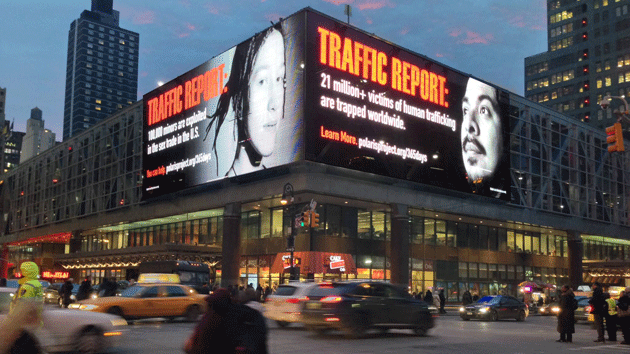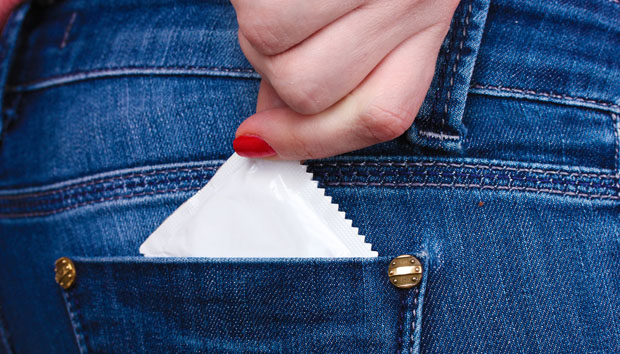
A Polaris Project anti-trafficking ad in New York City. Billboards and digital spots appear throughout the NY/NJ metro areas.Clear Channel
For the past few years, as January comes to an end, the media and government officials sound an ominous warning: Sex trafficking will be on the rise during the Super Bowl. Because of the sporting event, “the cruelty of human trafficking goes on for several weeks,” said Rep. Christopher Smith of New Jersey, the site of this year’s Super Bowl. John McCain’s wife, Cindy, has called the Super Bowl “the largest human-trafficking venue on the planet.” As their logic goes, hundreds of thousands of fun-seeking fans will descend on New Jersey and New York this weekend. With the crowds will come an increased demand for sex, and, in turn, sex trafficking.
But as several publications have noted, data from the past few years doesn’t support this link—only four arrests were made during coordinated sweeps at the last three Super Bowls combined. Bradley Myles, the CEO of anti-trafficking nonprofit Polaris Project, which houses the National Human Trafficking Hotline, told Mother Jones that “we haven’t seen a great deal of evidence that there is a massive rise in trafficking during the Super Bowl,” adding that the hotline will “staff up modestly” but “doesn’t experience a major increase in calls.”
What may be on the rise surrounding the Super Bowl is prostitution—and cops on the lookout for it. Last week, there was a spike in prostitution arrests in New York; one defense lawyer at Midtown Community Court said that more women were at court arraigned on prostitution charges in a single day than he usually sees over the course of a month.
Sex trafficking, by definition, is when commercial sex is induced through force, fraud, or coercion, even when there is no crossing of state or national borders involved. Domestic sex trafficking—the type of trafficking that authorities in NJ and NY have been primarily worried about surrounding the Super Bowl—can, to outsiders, look a lot like prostitution. But the law assumes that prostitutes are selling sex out of their own volition, whereas people who are trafficked are victims of a crime. Over 3,500 potential cases of sex trafficking were identified by the National Human Trafficking Hotline last year. A number of studies estimate that a third of child runaways in the US are trafficked into the sex industry.
Megan McLemore, an investigator at Human Rights Watch who researched New Orleans during the Super Bowl last year, said “there is little evidence that the [Super Bowl] sweeps that occur have a long term effect on how either prostitution or trafficking is addressed.” States hosting Super Bowls for the past four years have showed a jump in calls to the National Human Trafficking Hotline during the year of the event, but the hotline as a whole has also recorded jumps each year, from 7,637 calls in 2009 to 31,945 calls in 2013.
What’s undeniable is that the biggest football event of the year continues to be a focal point for anti-trafficking public awareness campaigns. According to NJ Assistant Attorney General Tracy Thompson, thousands of people—including cab drivers, hotel staff, airport security guards, and truck stop owners—were trained to recognize the signs of trafficking in 2013. More than 3,000 students have attended “Say Something” assemblies, in which survivors of trafficking speak to middle and high school students. Clear Channel partnered up with Polaris Project to launch an ad campaign in the New York/New Jersey metro area, and in “Super Bowl Alley,” between Herald Square and Times Square, digital ad spots read “Traffic report: Human trafficking was reported in all 50 states last year.” By the time the game starts on Sunday, volunteers in New Jersey and New York will have delivered an estimated 100,000 bars of free soap to motels and hotels with the National Human Trafficking Hotline number printed on the packaging.
Of course, one danger of focusing so much on the Super Bowl is what Myles, of Polaris Project, calls a “sympathy cliff”: People pay attention to the issue for a few weeks, and then don’t think about it until the next year. “Our view,” says Myles, “is that the more important story is the story that human trafficking is happening 365 days a year.”













